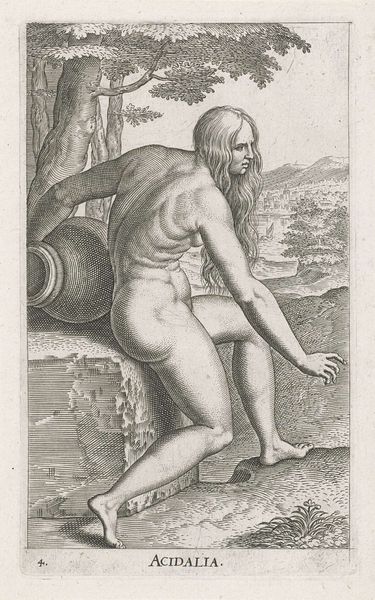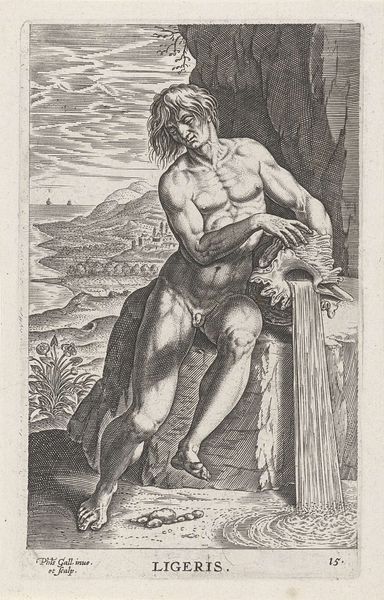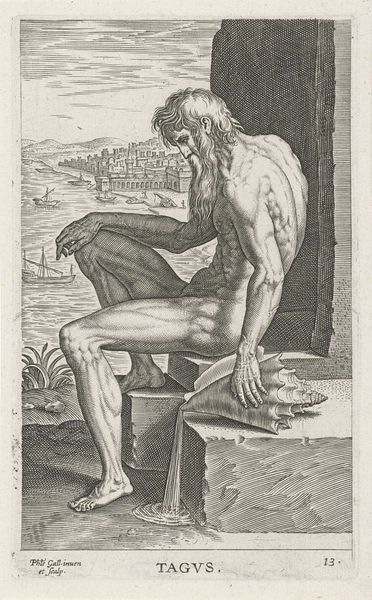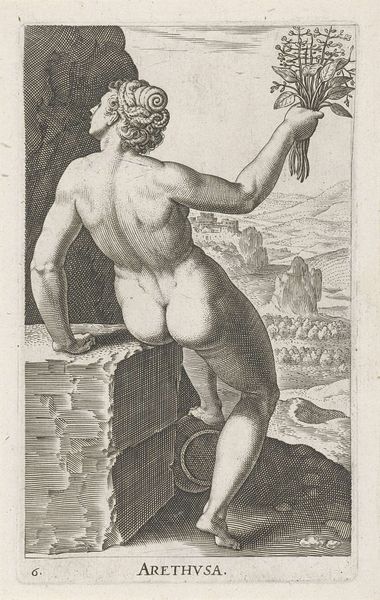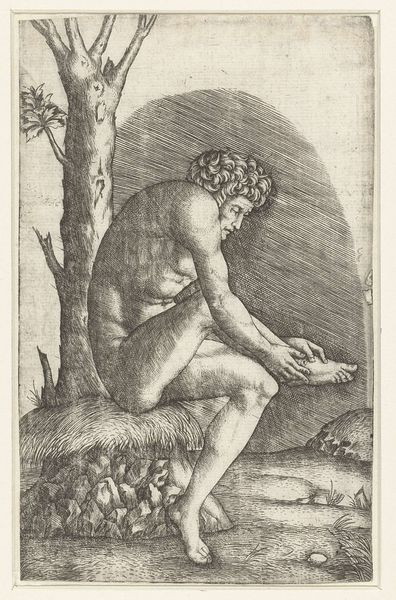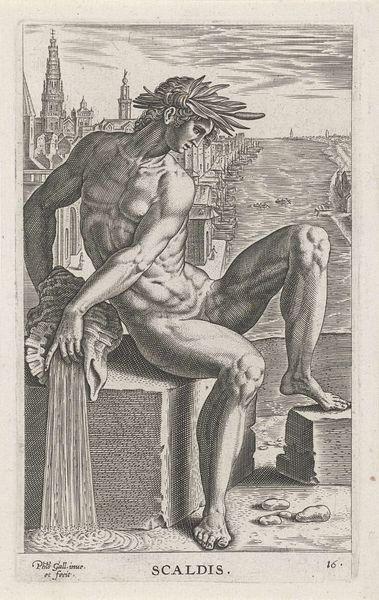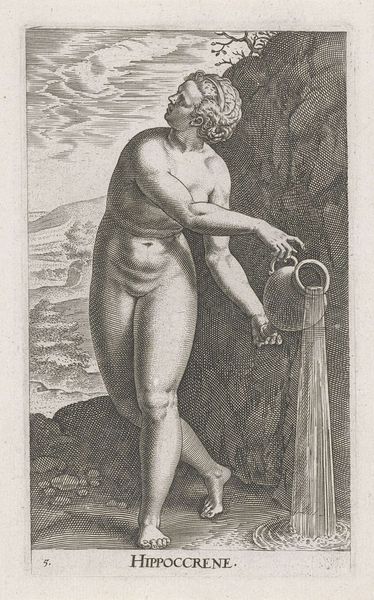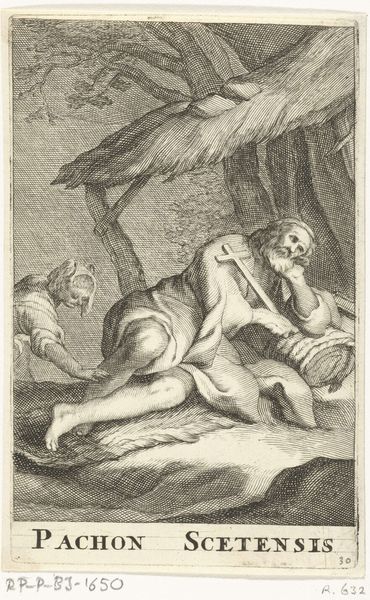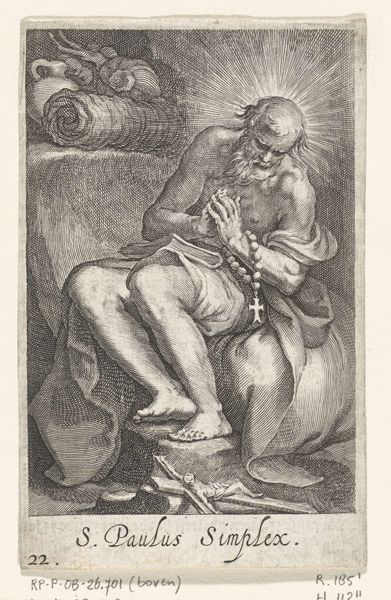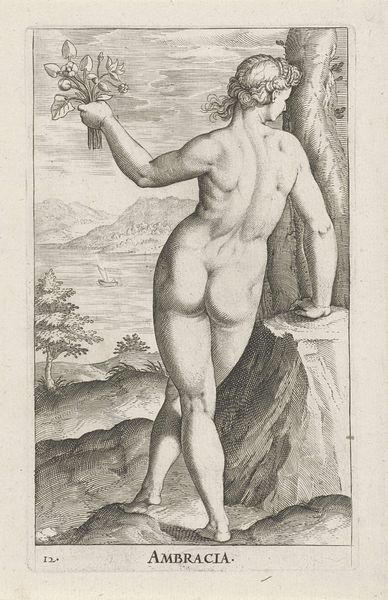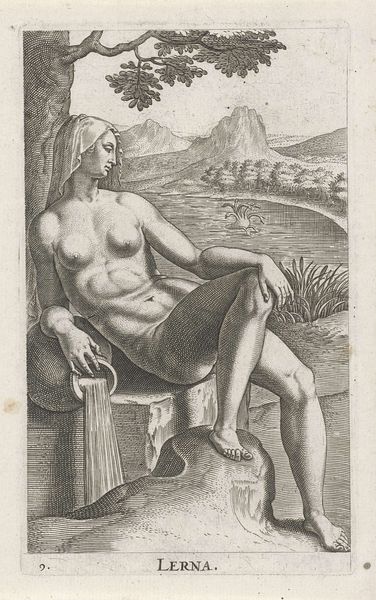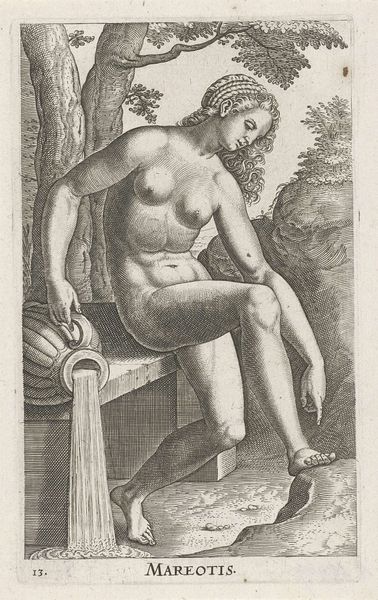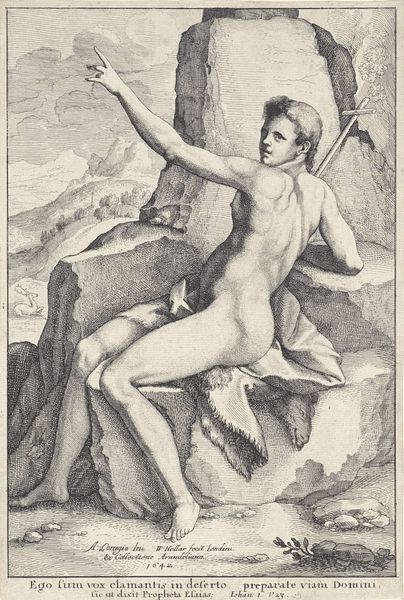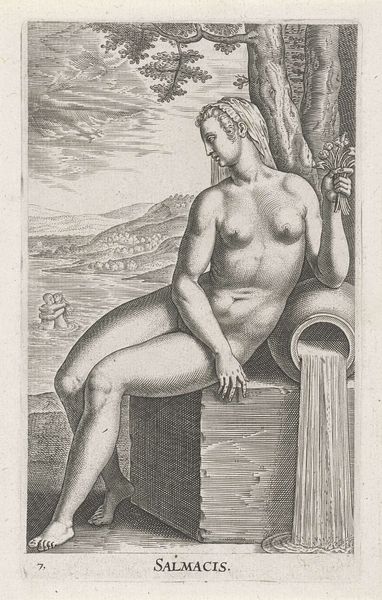
print, engraving
#
allegory
# print
#
landscape
#
classical-realism
#
mannerism
#
figuration
#
history-painting
#
nude
#
engraving
Dimensions: height 165 mm, width 102 mm
Copyright: Rijks Museum: Open Domain
Editor: This is "Riviergod Tamesis," or "River God Thames," an engraving by Philips Galle from 1586. It shows a muscular, nude figure leaning pensively against a rock. What’s particularly striking is the contrast between the smoothness of his skin and the intensely detailed textures surrounding him. How would you interpret this work? Curator: Let’s look closely at the production. It's an engraving, a method demanding intense labor and skill. Think about the social context: Who commissioned it? Who was meant to view it? Was it intended to ennoble the river, or serve another political purpose related to London's development and commerce? Consider the accessibility of prints. Did it democratize art for a wider audience, or just create another commodity for the elite? Editor: That's interesting, I hadn’t thought about the engraving process itself as holding meaning. It's so easy to focus on the figure and miss the means of production. So the labor is as much a subject as the Tamesis? Curator: Exactly. And where did Galle source his materials? The paper, the ink – these all had economic and social implications. Even the act of reproducing classical forms – isn't that an act of consumption? Consider also the availability of nude figures at the time. Who had access to the model, who was left out? How did the social norms affect the artwork’s look? Editor: So, by understanding the materials and their context, we gain a richer understanding of the work beyond its allegorical content. Curator: Precisely. It’s a shift from purely aesthetic appreciation to a critical engagement with the whole system that made the artwork possible. What will you look for now when encountering similar works? Editor: I'll definitely pay closer attention to the medium and consider how the materials themselves contribute to the meaning. It is never really "just" the final result.
Comments
No comments
Be the first to comment and join the conversation on the ultimate creative platform.
